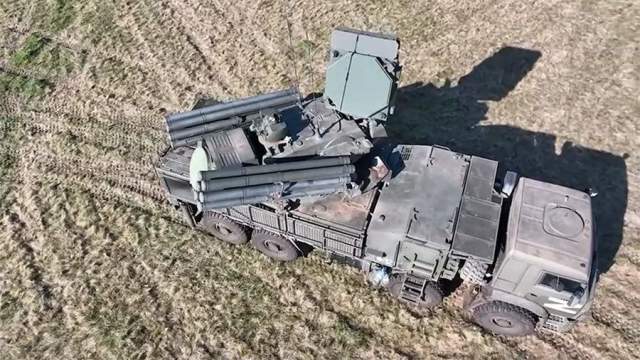Calculations of self-propelled anti-aircraft missile and cannon complexes (ZRPC) "Pantsir-S1" continue to protect units of the Russian military from means of air attack in the zone of a special military operation. The Ministry of Defense of the Russian Federation has published footage of the work of the military of the Western Military District (ZVO) on the ZRPC.
The ZRPC protects the Russian Armed Forces from Ukrainian unmanned aerial vehicles, missiles and ammunition for multiple launch rocket systems (MLRS). Calculations continue to destroy Ukrainian Tochka-U missiles.
The detection systems of modern anti-aircraft complexes allow operators to calculate in the sky both large, moving objects, such as cruise and ballistic missiles, helicopters, airplanes or missiles of the Soviet and Western-style MLRS, and very small ones. Such, for example, as household drones measuring 30 by 30 cm, which the intelligence of the Ukrainian military often uses for reconnaissance of the terrain and as a kamikaze.
The Pantsir is equipped with a thermal imager, so anti-aircraft gunners can see whether an explosive charge with damaging elements is attached to the plastic hulls of these aircraft. The intensity of the calculations of the complexes is exorbitant.
If necessary, the complex may not even stop, conduct targeted shooting on the move. The radar system installs an invisible shell with a height of 15 and a radius of 20 km. It is armed with 12 anti-aircraft guided missiles and two paired anti-aircraft submachine guns, which guarantee a barrage of fire up to 5 thousand rounds per minute.
This calculation of the ZRPC "Pantsir" in the course of carrying out round-the-clock combat duty to protect the airspace destroyed the next Ukrainian missiles "Tochka-U".
The Ministry of Defense said that according to the size and speed of the objects, the targets were classified as operational-tactical missiles "Tochka-U". The enemy's missile strike was detected in a timely manner, which allowed the calculation to work as quickly as possible.
"Two operational-tactical "Dots-U" were detected by combat vehicles. As a result of the correct calculation actions, these targets were destroyed. The range of these missiles did not cause any damage to the population and the protected object. There are no casualties," said battery commander Anton.
The calculations in the battery skillfully carried out the capture and tracking of an air target, and also created a continuous zone of interception of an air target. At the command of the commander, a combat launch was made with surface–to-air missiles, which successfully hit targets. The skills and abilities of the crews made it possible to hit targets at a distance of 12 km.
Before that, in September, the Ministry of Defense of the Russian Federation showed the work of self-propelled anti-aircraft missile and gun complexes "Pantsir-S" of the Central Military District (CVO). Even the formidable "Alligators" (Ka-52 attack and reconnaissance helicopters) need support from the ground. In tandem with the ZRPC, combat aviation shows impressive results, the department noted.
Russia continues the special operation to protect Donbass, which President Vladimir Putin announced on February 24. A few days earlier, the situation in the region had significantly worsened due to shelling by Ukrainian militants. The authorities of the Donetsk and Lugansk People's Republics announced the evacuation of residents to the Russian Federation, and also appealed to Moscow for help. On February 21, the President of the Russian Federation signed a decree recognizing the independence of the DPR and LPR.
Watch more relevant videos and details about the situation in Donbass on the Izvestia TV channel.

